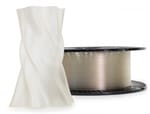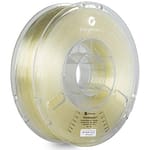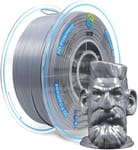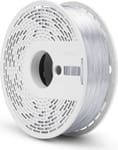Polyvinyl butyral, abbreviated PVB, is not as common as PLA and PETG, but it’s certainly worth a try if you print aesthetic parts frequently. Unlike many other common filaments, PVB can be smoothed using isopropyl alcohol (IPA), a readily available and relatively safe solvent, erasing layer lines and achieving a silky-smooth finish.
Makers often find that the printability of this material is no major hurdle, and settings are similar to that of PETG. There’s not even a need for an enclosure. Like PETG, PVB is hygroscopic, absorbing moisture from the environment, so it’s recommended to store it in a dry box or dry it before printing.
The main drawback of PVB is its price, costing around $20 or more per kg compared to PLA. But as we said, save PVB for aesthetic prints and skip it for functional parts that need durability because PVB is mechanically inferior to many other filaments.
We’ll cover the best filament options in a bit, but first, let’s take a closer look at how you can achieve smooth prints with PVB.
Special Features
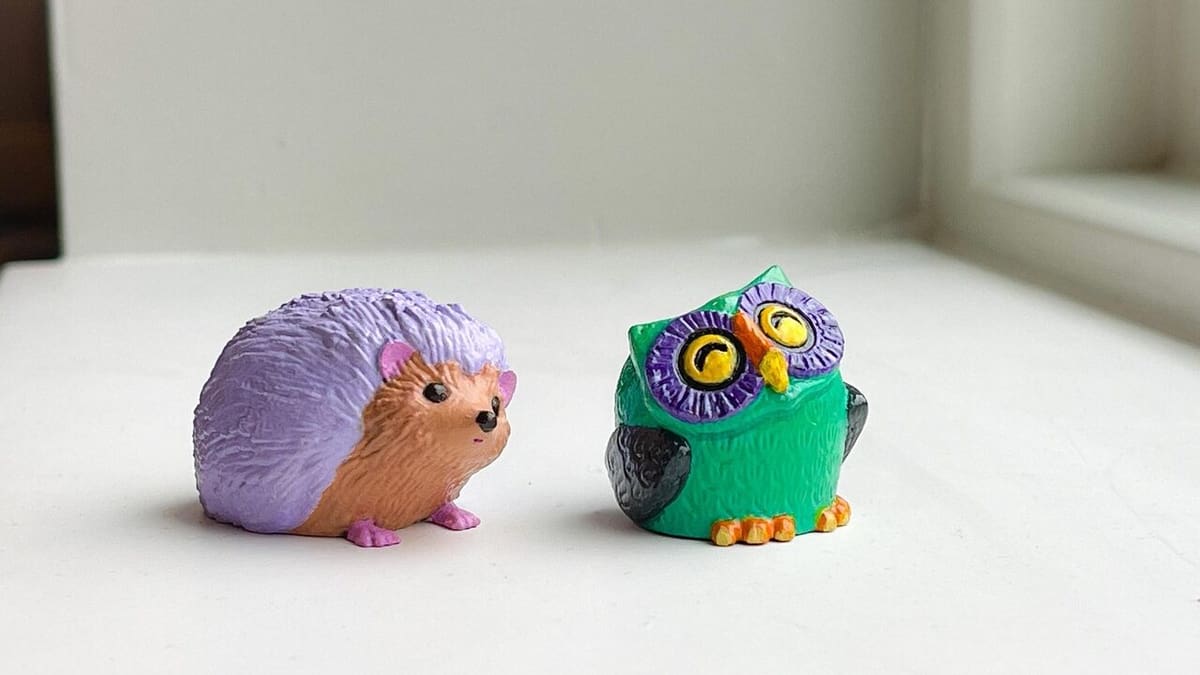
PVB is a perfect choice for aesthetic prints because of its unique feature of smoothing it out with IPA. While ABS smoothing is also possible, it requires a more intensive treatment with acetone to do so, which is a harsher solvent. Achieving a shiny surface on other filaments like PLA or PETG is only possible with sanding and coating.
For smoothing PVB, you may have to experiment with what works best with the specific filament and model you choose. One option is a typical vapor smoothing treatment where the model sits in a container (often on a mesh-like stand) containing IPA vapor. Resting a glass jar with some IPA on a heated print bed at around 60 °C can do the trick.
If you don’t want to bother with a vapor chamber, IPA smoothing is also possible by using a spray bottle to apply a light coat. Others have found that using a brush to lightly coat the model is a more controlled method of smoothing. With any method, multiple coats can be done, but be sure to let the model dry between coats.
Now that we know a bit more about PVB, let’s check out the best PVB filament options!
Prusament

Being one of the first to introduce PVB into the market, Prusament PVB can’t be missed. As one of the most established brands in the 3D printing world, they produce not only 3D printers but also high-quality filaments. They’re the only manufacturer that allows you to access the datasheet for your specific roll of filament by scanning its QR code.
Users have reported very positive experiences with this filament. They have found it simple to print with the suggested temperatures and easy to smooth. A good printing tip is to lower the maximum volumetric flow rate in your slicer because PVB can’t be printed as fast as PLA.
Prusa offers six colors at the moment, with the possibility of buying a pack of sample filament to try it out and see if you like it. Since aesthetics is the main purpose of using this filament, you should know that Prusa offers only transparent colors at the moment, so printing with thin walls can really give a crystal clear result.
- Price per kg: ~$50 (~$25 for 500-g spool)
- Available colors: Natural transparent, bright green transparent, bark blue transparent, light yellow transparent, Prusa orange transparent, smoky black transparent
- Available diameter: 1.75 mm
- Bed temperature: 65-85 °C
- Hot end temperature: 205-225 °C
Polymaker
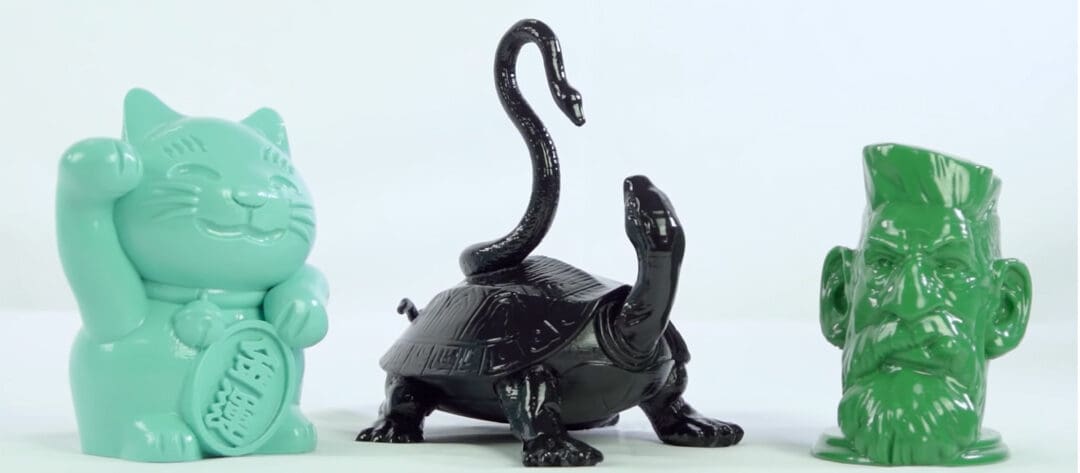
Since its founding in 2012, Polymaker has created its own lines of filament for almost every printable plastic you can think of. Its production is divided between China and the USA.
As the name of this line implies, their PolySmooth was designed precisely for the purpose of being smoothed. Users have been quite enthusiastic about this filament, being easy to print and exceptionally smooth. Pay attention to thin-walled parts, as they can get soft in water if there’s alcohol residue. Therefore, take extra care to thoroughly dry parts after smoothing.
At the time of writing, 14 colors are available – the widest selection on this list. PolySmooth has been particularly appreciated for the simplicity of obtaining clear prints. Clear parts are always beautiful but usually difficult to achieve due to the nature of the 3D printing process. Transparent PolySmooth doesn’t develop a frosted surface like many other “clear” filaments.
- Price per kg: ~$46 (~$40 for 750-g spool)
- Available colors: Clear, black, white, blue, red, green, teal, and seven others
- Available diameters: 1.75 mm, 2.85 mm
- Bed temperature: 25-70°C
- Hot end temperature: 190-220 °C
Yousu
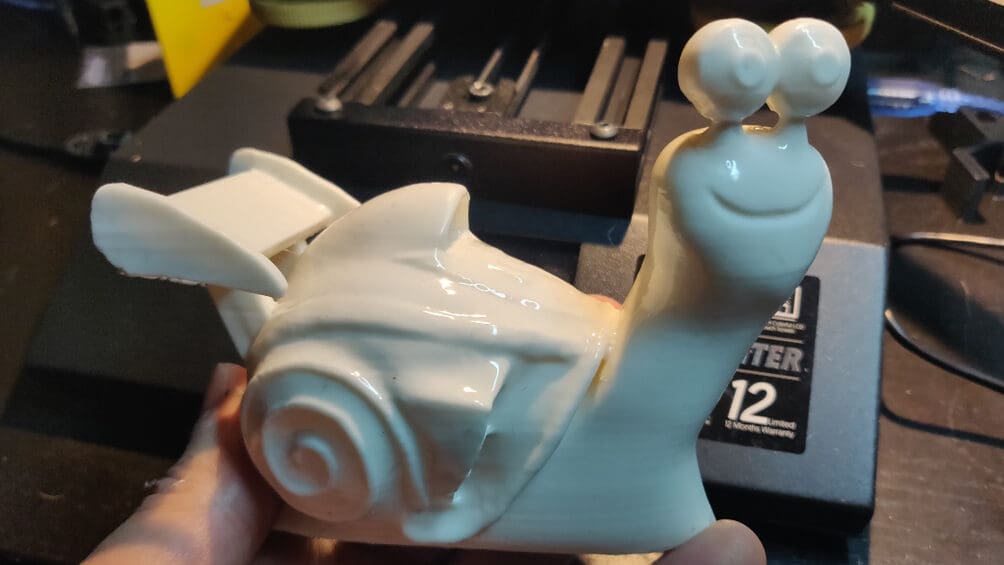
Yousu has been around for almost ten years now, specializing in resins and resin 3D printers for jewelry. They also produce numerous lines of 3D printing filaments for FDM machines, including exotic materials such as POM, PCL, and PVB.
Although Yousu is a less-known brand, its PVB is one of the most popular in circulation. Reviews on Amazon indicate an overall positive printing and smoothing experience. One user has suggested using 60 mm/s for printing speed, 45 °C for the bed plate, and 188 °C for the nozzle temperature, but you may have to do some experimenting to get it right for your machine.
Brushing it with IPA seems the best option for smoothing this filament. You may need two or three passes to obtain the best results, depending on the height of the layer lines. The higher the layers, the more passes you’ll need.
- Price per kg: ~$30
- Available colors: Black, red, blue, green, marble, white, silver
- Available diameter: 1.75 mm
- Bed temperature: 40 °C
- Hot end temperature: 190-220 °C
Fiberology
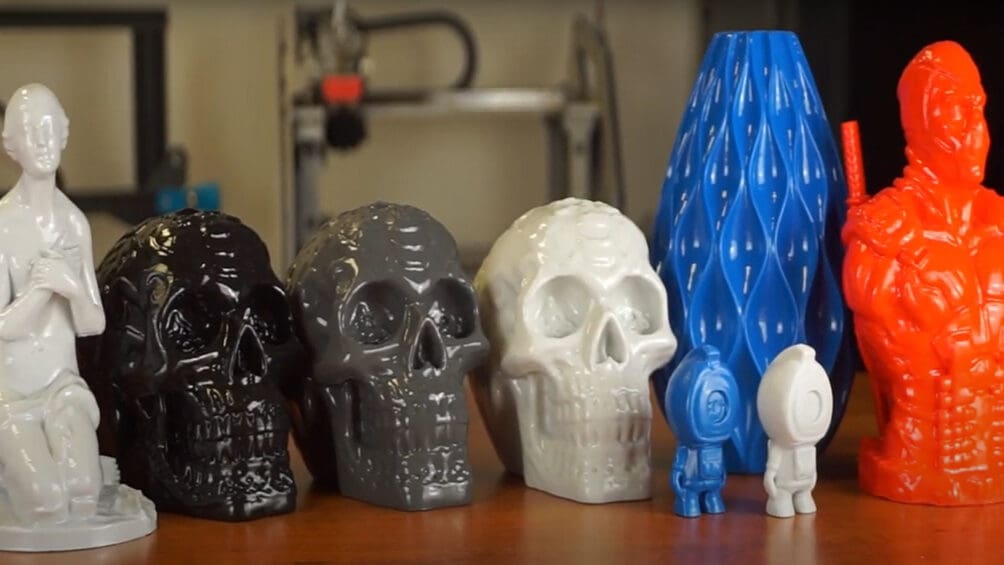
The Polish manufacturer Fiberology has earned their spot in the premium filament space. Its defining trait is astonishing tolerance values – we’re talking about ±0.02 mm for the diameter and only ±0.01 mm for the oval tolerance! Fiberlogy prioritizes printability over strength for its FiberSmooth.
Fiberlogy has a guide on YouTube on how to smooth the prints with its PVB. They recommend brushing the part with IPA to achieve a smoother finish. Don’t forget that you should let the piece dry for three or four hours to have the best results.
At the moment they offer six colors, including a clear shade and non-translucent colors. Currently, only 1.75 mm filament is available.
- Price per kg: ~$70 (~$35 for 500-g spool)
- Available colors: Black, red, blue, graphite, grey, pure transparent
- Available diameter: 1.75 mm
- Bed temperature: 75 °C
- Hot end temperature: 215-225 °C
Rosa3D
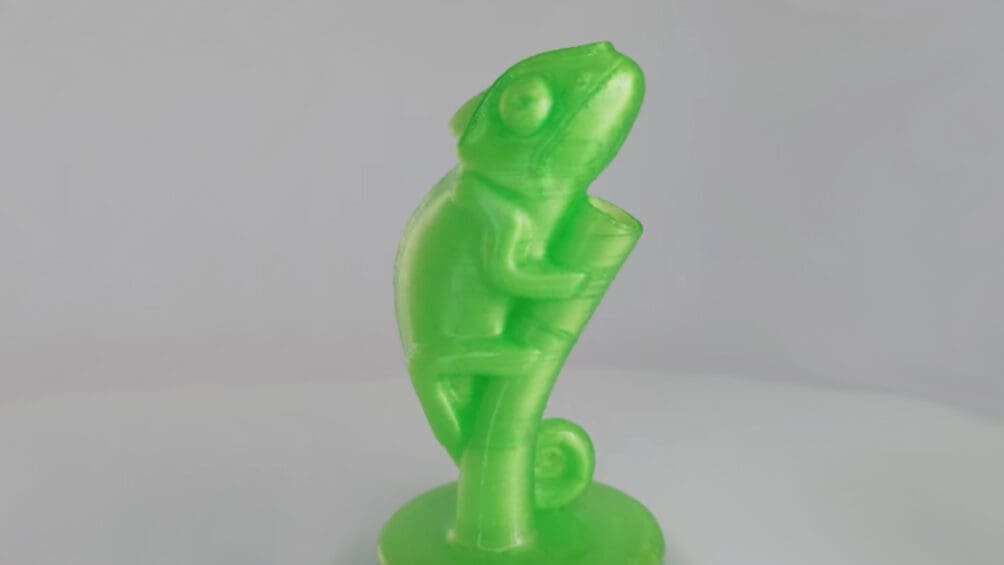
Rosa3D is another Polish plastics manufacturer that’s been around since 1979 but has recently brought its focus to 3D printing filaments. At the moment, they work with 15 kinds of plastics, including PVB.
The manufacturer posted a short YouTube video and online documentation detailing a simple vapor smoothing method for parts printed with their filament. You can also dip the piece into IPA, but avoid this for thin-walled prints because they may melt in the solution.
Rosa3D offers both transparent and opaque color options, making available no less than eight colors.
- Price per kg: ~$60 (~$30 for 500-g spool)
- Available colors: Black, red, navy, blue transparent, green transparent, natural, turquoise, yellow
- Available diameter: 1.75 mm
- Bed temperature: 65-75 °C
- Hot end temperature: 200-225 °C
License: The text of "The Best PVB Filaments" by All3DP is licensed under a Creative Commons Attribution 4.0 International License.
CERTAIN CONTENT THAT APPEARS ON THIS SITE COMES FROM AMAZON. THIS CONTENT IS PROVIDED ‘AS IS’ AND IS SUBJECT TO CHANGE OR REMOVAL AT ANY TIME.

